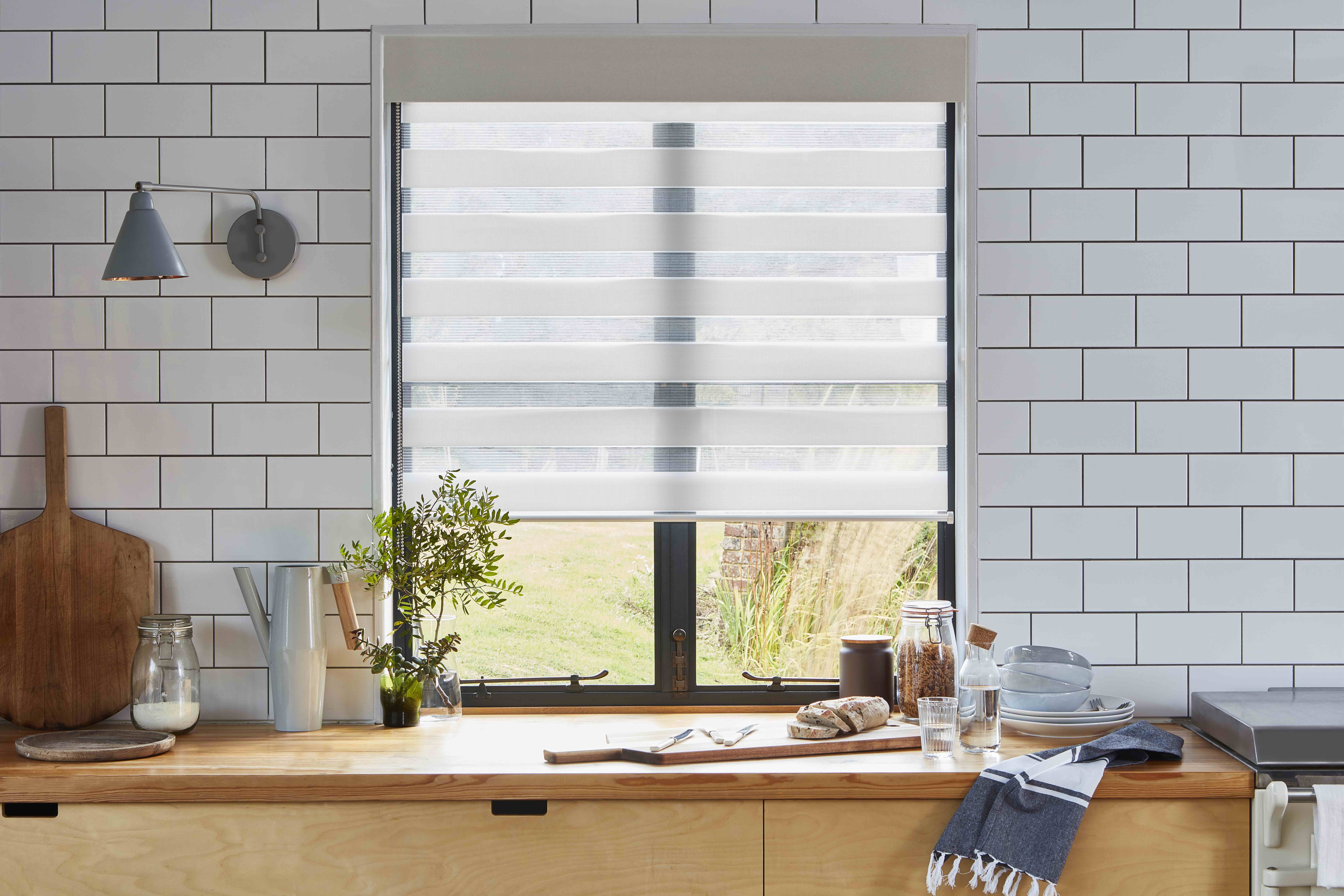
If you're designing a small kitchen, then getting the right tile-size, whether for walls or floors, will have a big impact on making your small space feel bigger and brighter. But from the thousands of different styles, colours and designs on the market, where to start to choose the best kitchen tiles that suit and enhance your space?
We’ve put together some tips to help you find floor and wall tiles that suit your kitchen and enhance the sense of space. If you are after more kitchen ideas head to our gallery next.
- Are you designing your from scratch? Check out our kitchen design page for expert advice.
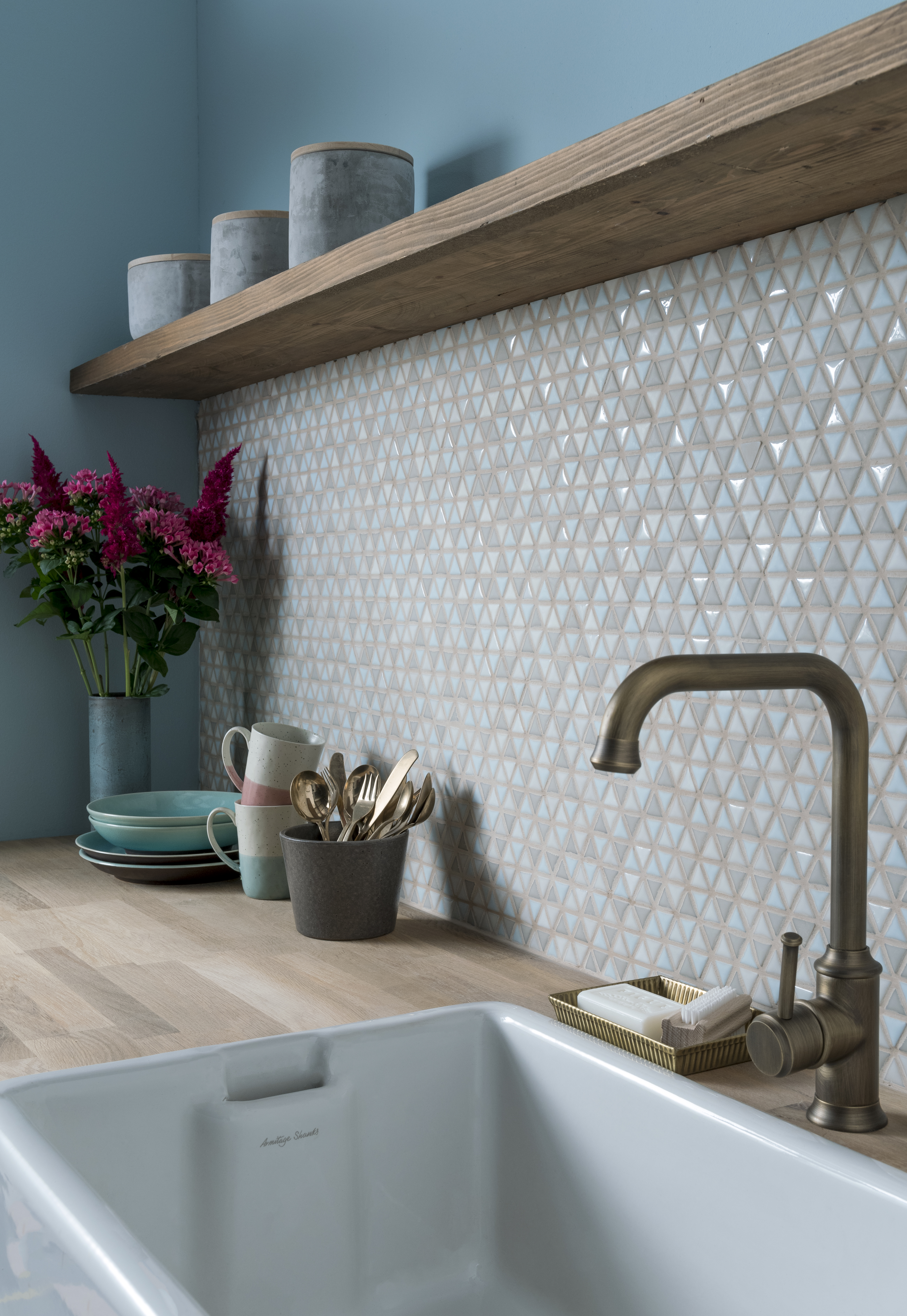
The diagonal, lustrous effect of the pattern and material of these wall tiles tricks the eye into seeing the kitchen as larger than it is. Tiles by Topps Tiles
What size of tile should you use in a small kitchen?
Tile size shouldn’t be determined by kitchen size, despite what you may hear. A small kitchen design can actually benefit from a large tile. With fewer grout lines the walls and floor are less cluttered and the room visually expanded.
Using smaller tiles, such as mosaics, will give you lots of grout lines, which can give the kitchen walls a grid-like appearance that can promote the feeling of being boxed in – making your kitchen feel smaller still.
This doesn’t mean you have to rule out small tiles out, however. If you've fallen for some beautiful mosaics, you can mix it up a bit by using different sized tiles in different zones of your kitchen, with smaller tiles being limited to the splashback behind the hob, a larger format tile used in the majority of the room, perhaps on the floor, and mosaic tiles in alcoves or recesses (spaces you don’t expect to feel generously-sized).
It can be hard to tell whether what will look good in your kitchen when you're looking at it on the shelf of a tile shop, so it makes sense to request samples (a few to lay on a sample board if you can) to see them in situ.
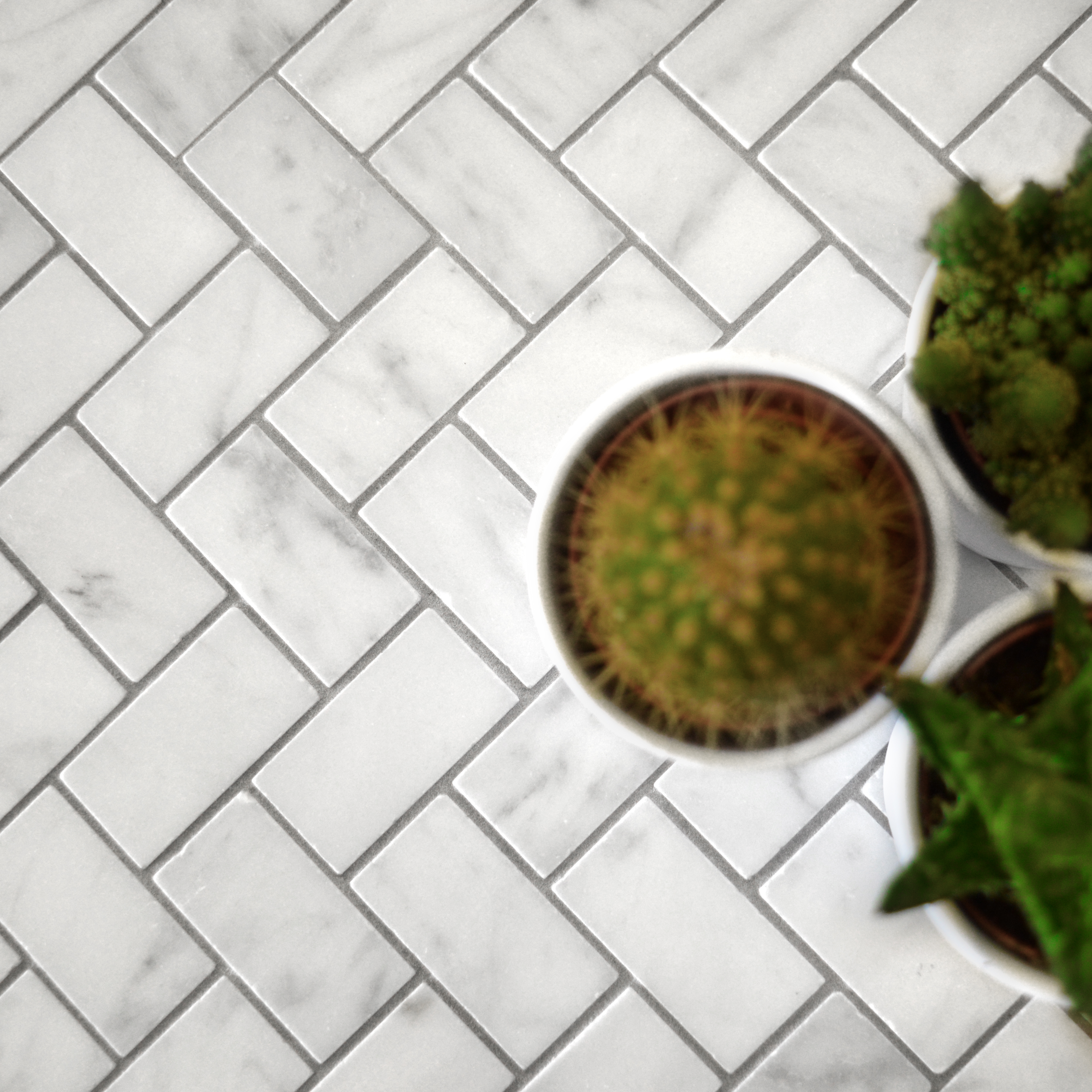
A herringbone effect on a kitchen floor creates texture and pattern – choose a dark grout to hide dirt. Tiles by Walls & Floors
Tricks with tiles to make a small kitchen look bigger
It’s a well-known rule that using lighter colours will help a small room look bigger, so apply that to your kitchen, too. Choosing lighter colours, such as white or cream, for your kitchen tiles will help reflect more light than darker colours would.
Another trick is to use glossy, metallic or mother-of-pearl finish tiles, which will enhance the space by reflecting light, giving a sense of grander proportions.
However, don’t shy away from dark colours — a darker tile can be used effectively to add a sense of depth to a space.
Another trick to use in small kitchens is to lay your tiles in diagonal patterns, which tricks the eye into seeing the space as bigger than it really is. When you take a look at normal squared options they are fairly easy to count, but arrange them diagonally and your eyes are drawn to the longest dimensions of the room.
If a diagonal tile pattern doesn’t sound appealing, consider laying your tiles in brick bond. This is a popular choice for metro tiles, but helps limit the grid pattern effect mentioned earlier, which can emphasise the limited width and height of a room.
- Once you've read the tips, jump to our buyer's guide of the best tile design ideas to make a small kitchen feel bigger.
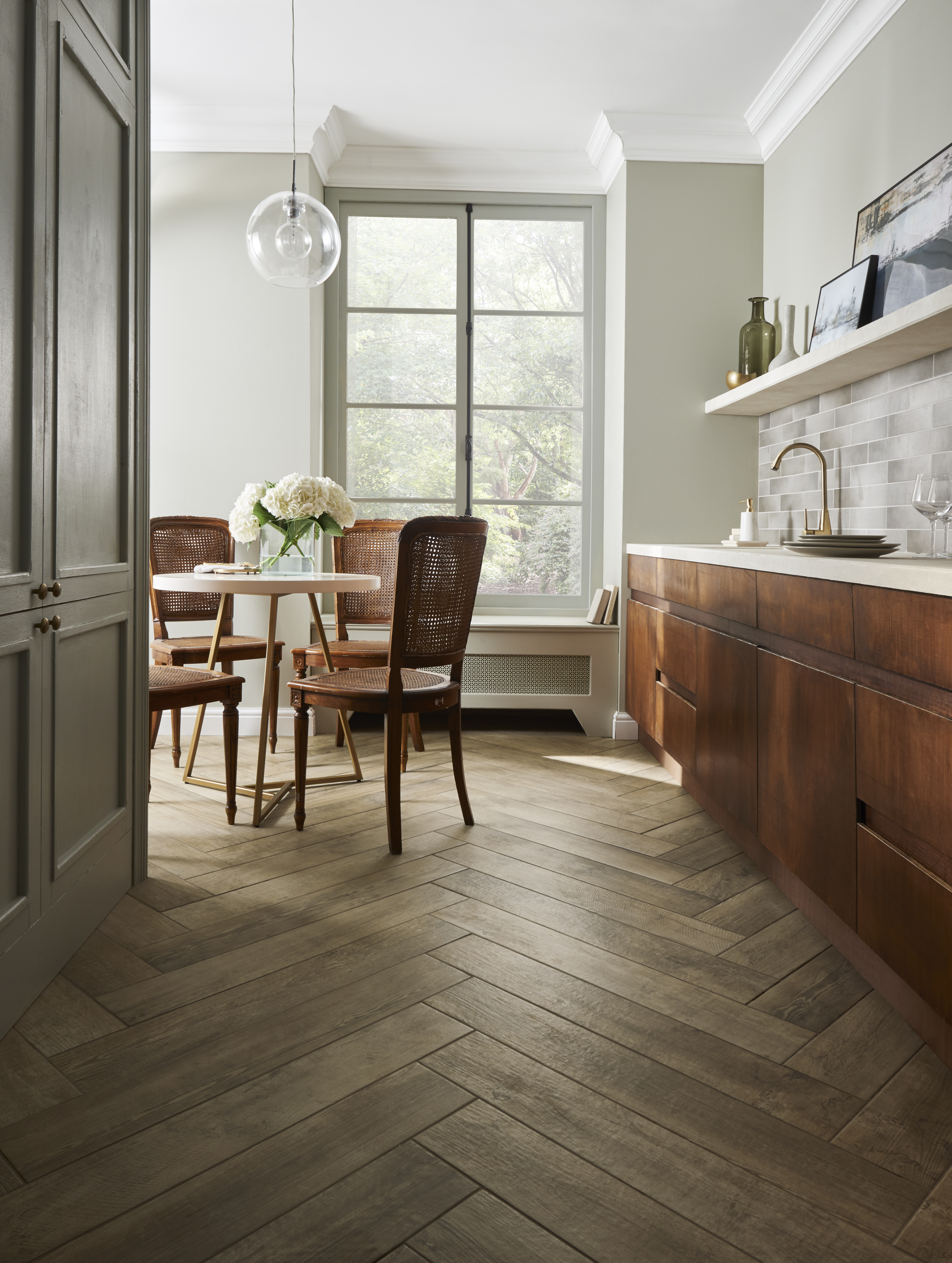
Tiles laid in a herringbone pattern break up the classic grid-effect, making the room feel larger. Mora porcelain oak-effect tiles, Topps Tiles
Where to tile in a kitchen
A small kitchen can feel unwelcoming if it's tiled from floor-to-ceiling and wall-to-wall but, to enhance the feeling of space in the room, you need to aim for as much decorative flow as possible. In other words, if the placement of the fixtures and fittings means that there will only be small gaps of painted wall between, say, a hob splashback and one for a kitchen sink, it's better to tile across the length of the wall and to limit the changes in tiling levels than to interrupt the tiling.
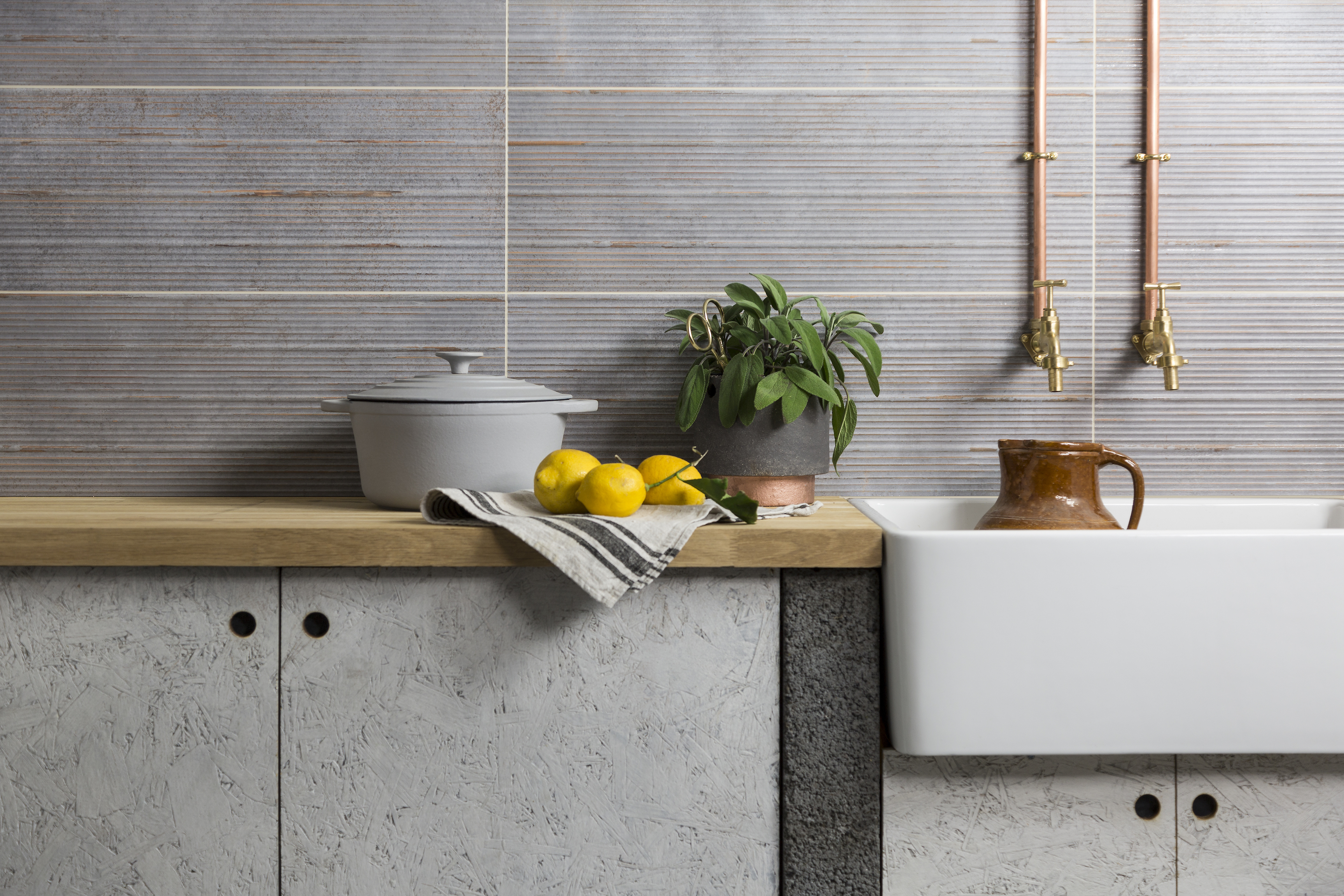
Large format tiles require less cutting and wastage, and have fewer grout lines, making them a good choice for small kitchens designed on a budget. Wall tiles, Gemini Tiles
How to calculate how many tiles you need
Measure up and calculate the number of tiles you need before you head out to buy them. To make life easier for you, there are many tile calculators available online. You can also go to your local retailer armed with the measurements and they should be happy to help you out.
Make sure to add on an extra 10 per cent to allow for breakages, cuttings, waste and pattern matching. You don’t want to be halfway through tiling your kitchen before you realise that you don’t have enough to finish the job.
Choose the right tile materials
Travertine, marble, limestone, slate and granite are all natural stone options for kitchen tiles, each with its own natural properties. Slate in particular is great for kitchens, as it has low porosity and its riven texture is non-slip, while stones such as marble, travertine and limestone can be polished to a high shine for a stunning finish, but need to be sealed.
Ceramic and porcelain tiles are usually a more affordable manmade option, and there is huge scope in the range of finishes available. From those that mimic stone and even wood, to bright colours, decorative patterns, high glosses and raised prints.
Mosaics, in stone, glass or ceramic, look beautiful over smaller areas, such as behind the basin, and give a sense of having been meticulously laid. They are also available in sheets for easy installation.
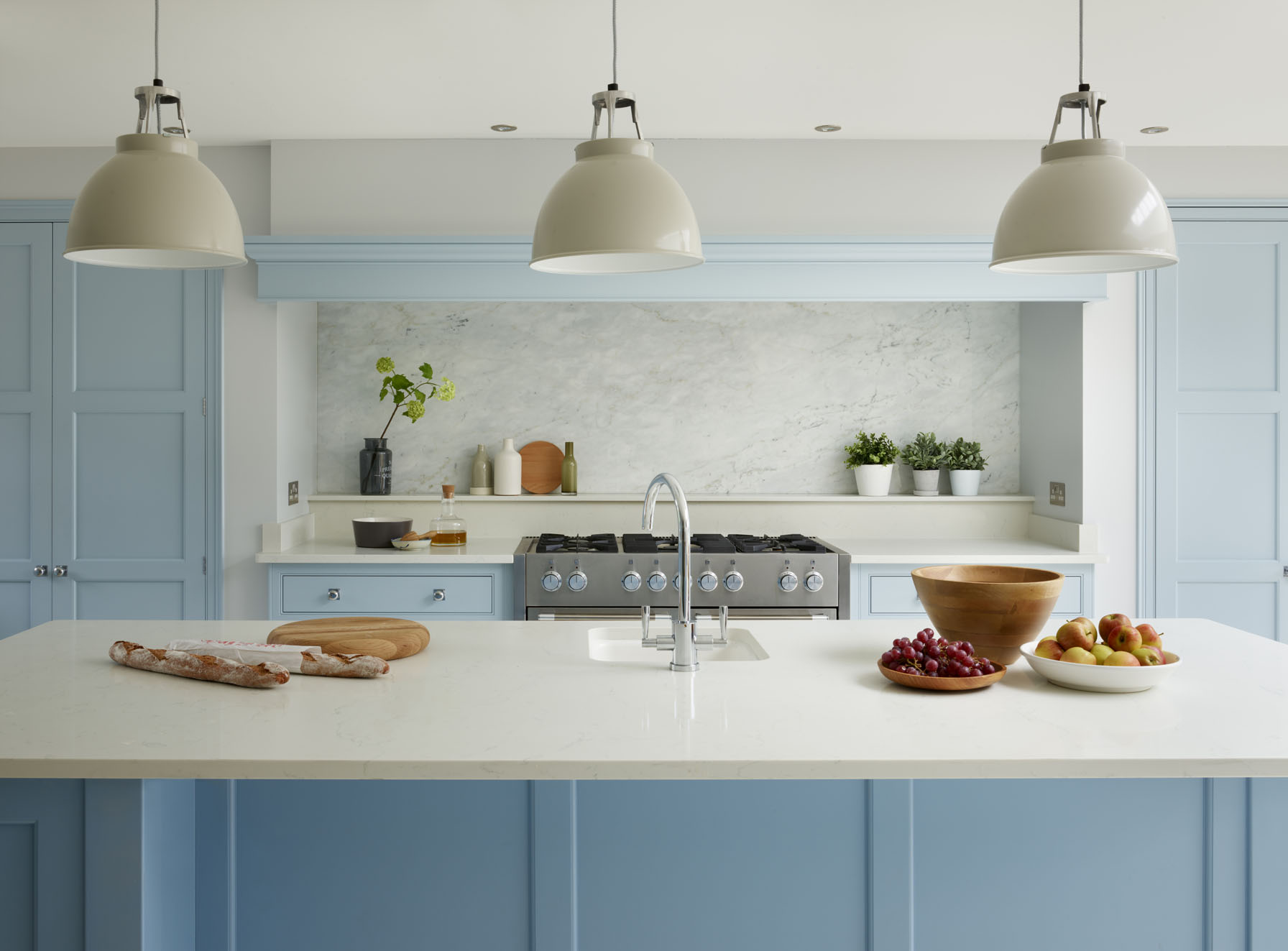
An aquatic palette of glass tiles in a range of striking formats, these Indian Ocean mosaics in Madagascar Seaspray from Fired Earth give a subtle mix of colour and texture
How to tile wonky walls
'Many old houses have wonky walls so there are a number of tricks you can use to overcome this when tiling kitchen walls so that you are not left with a bumpy-looking finish, with tiles jutting out at odd angles,' says John Forden of Topps Tiles.
'Creating a level wall is particularly important if you plan to use large format tiles as they have no way of flexing over the humps or bends on an uneven surface.
'The best option is to invest in re-skimming the offending walls with plaster, or installing new plasterboard – a water-resistant one if used behind a shower or sink. Place the tiles on to this to create a flush, even finish. Remember that new plaster needs to be left four weeks before tiling.'
Small Space Squad | Watch The Real Homes Show for more on styling a small space
Make the most of small rooms or a small home with top ideas for our experts on The Real Homes Show. New episodes every fortnight
More tiling know-how:
Join our newsletter
Get small space home decor ideas, celeb inspiration, DIY tips and more, straight to your inbox!
-
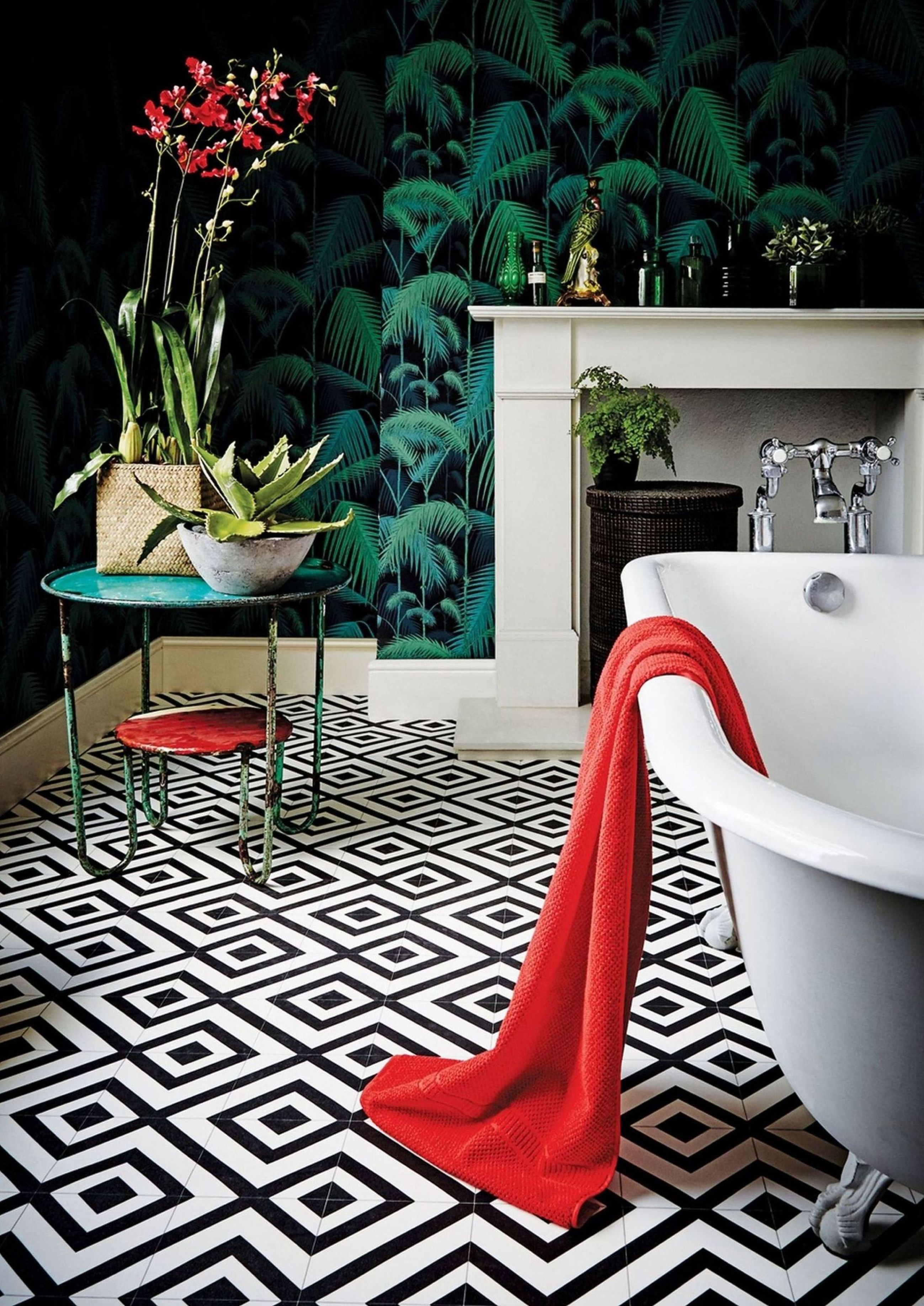 Bathroom floor tile ideas: 12 beautiful tile designs to inspire your scheme
Bathroom floor tile ideas: 12 beautiful tile designs to inspire your schemeBathroom floor tiles can add texture, pattern, colour and interest to your room. Check out our ideas and ditch the all-white look for something more adventurous...
By Sophie Warren-Smith
-
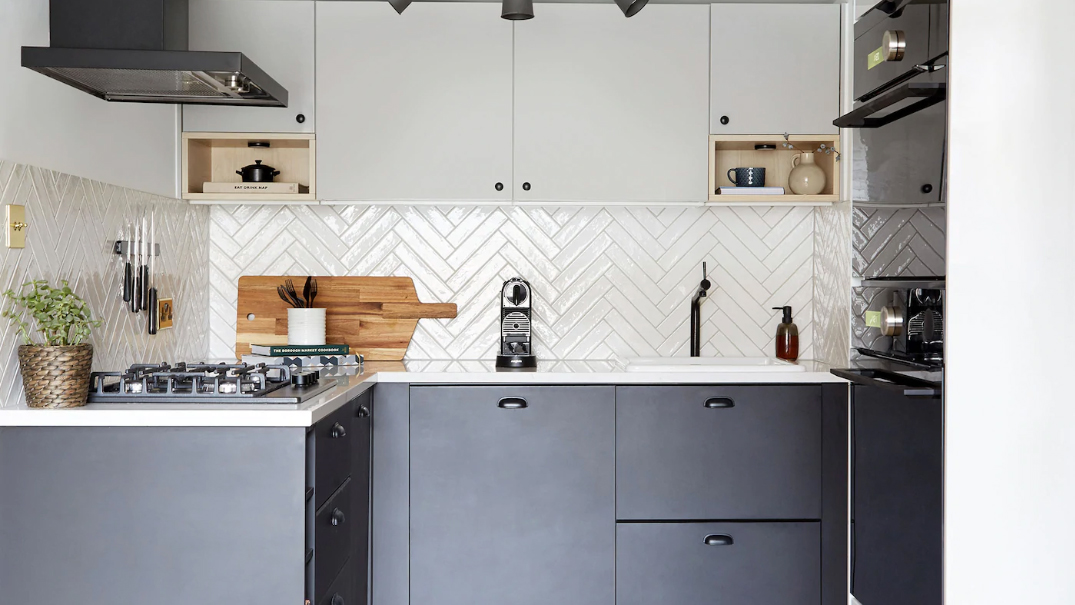 How to choose the best kitchen tiles
How to choose the best kitchen tilesLooking to buy the best kitchen tiles? We have loads of practical advice so you can pick the best option
By Sarah Warwick
-
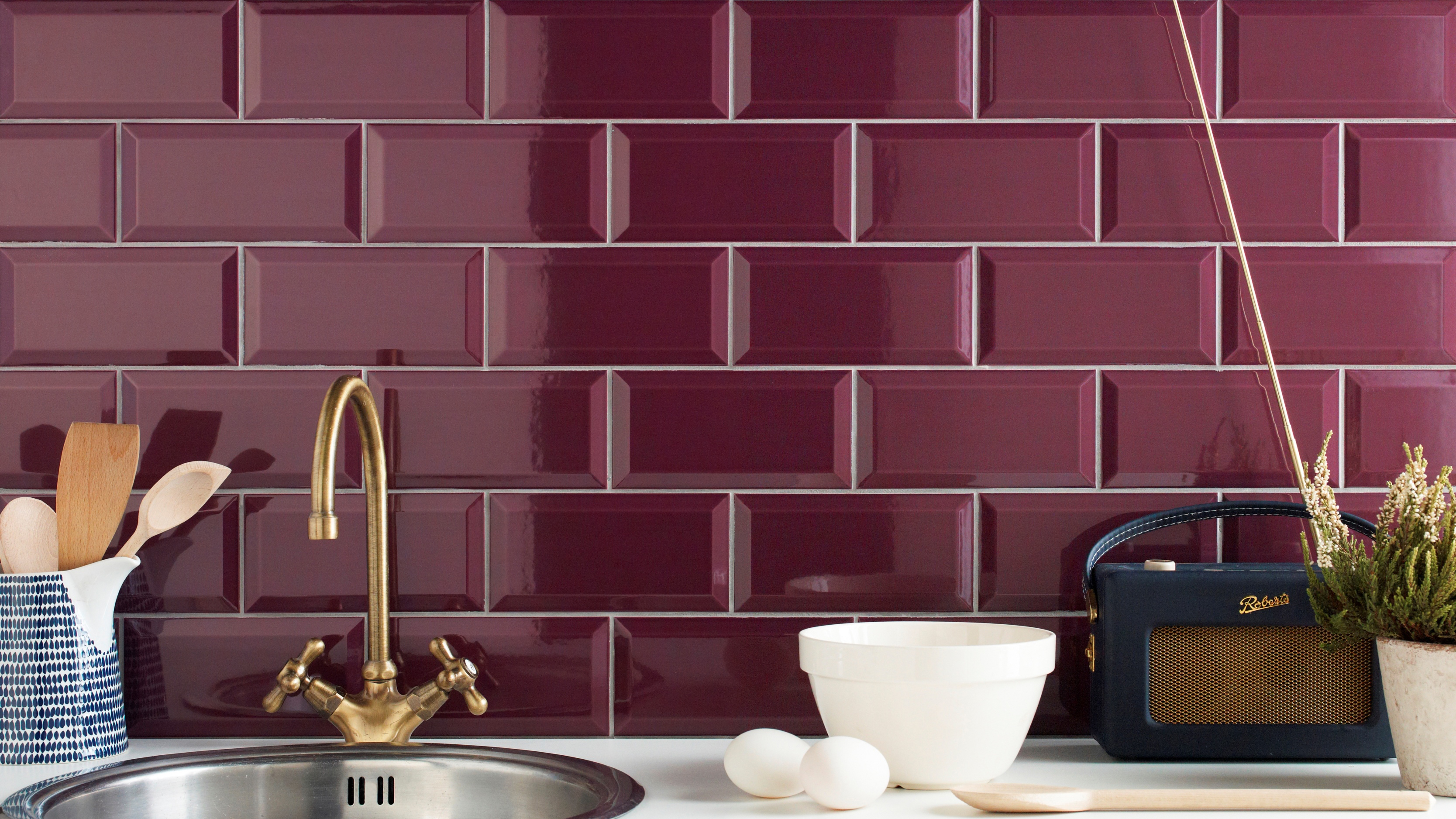 The best tile adhesive: everything you need to know before you tile the shower...
The best tile adhesive: everything you need to know before you tile the shower...When tiling your bathroom or kitchen floor, choosing the right tile grout and adhesive is key to creating a smart finish that will last
By Hebe Hatton
